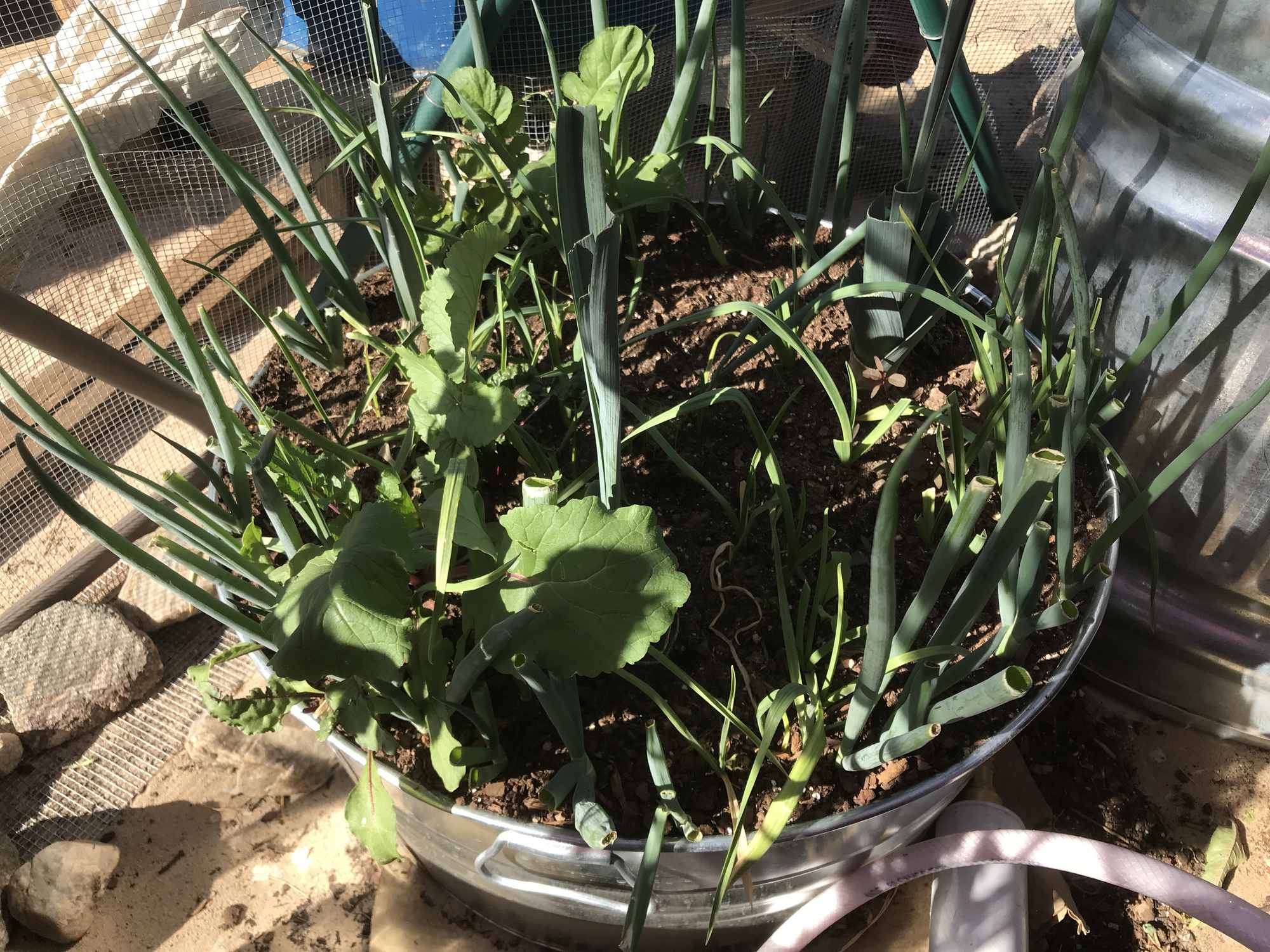
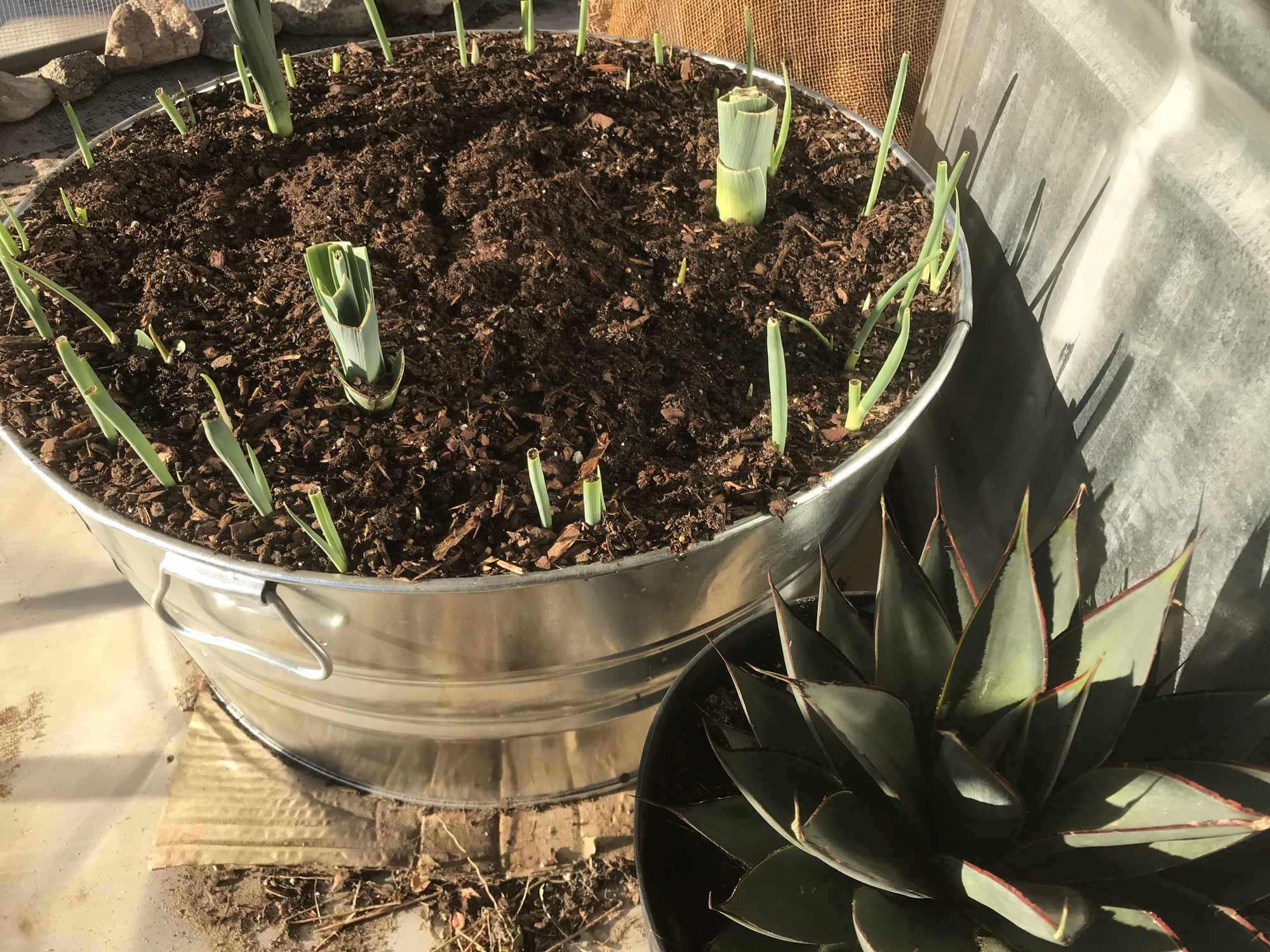
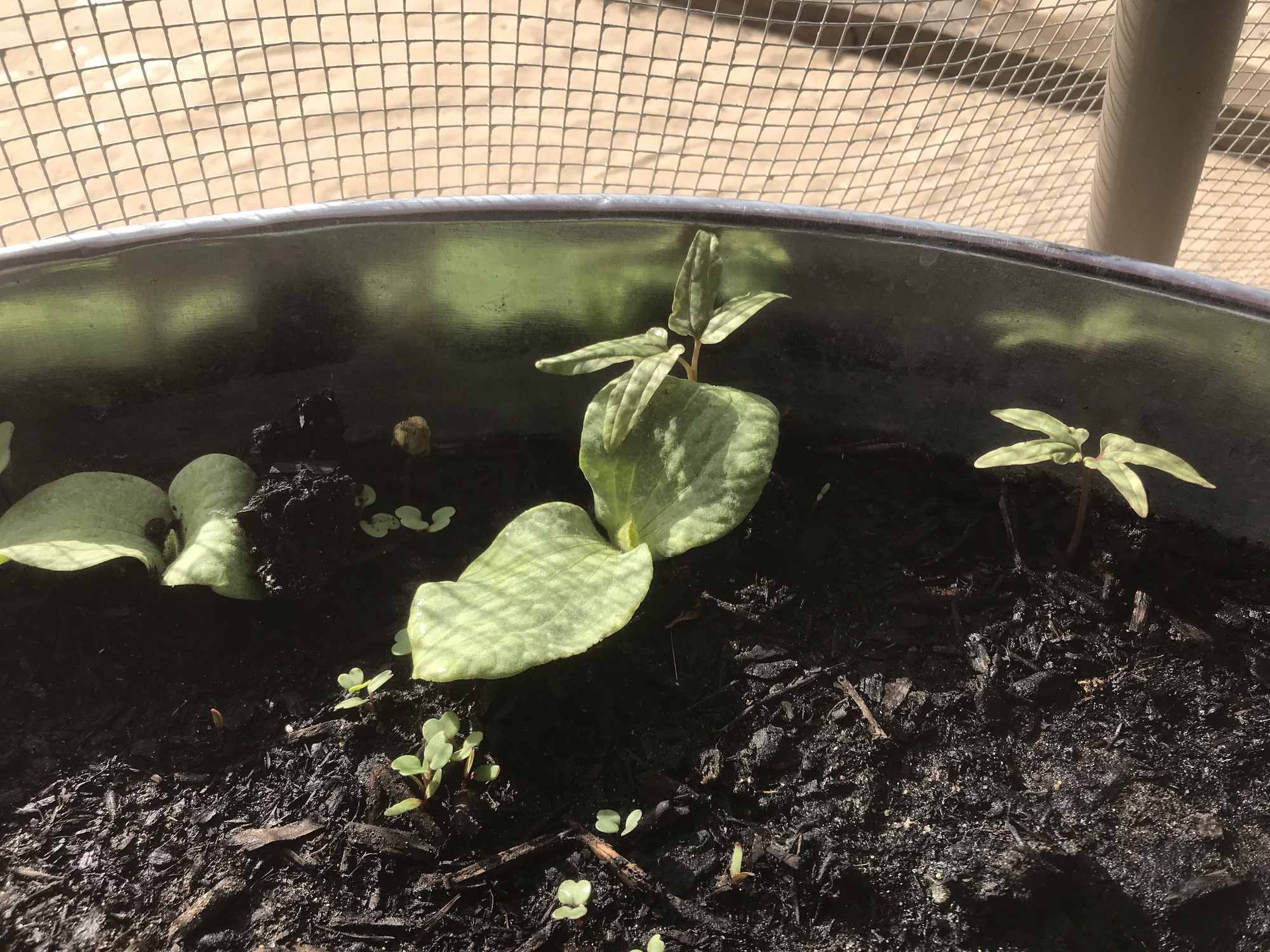
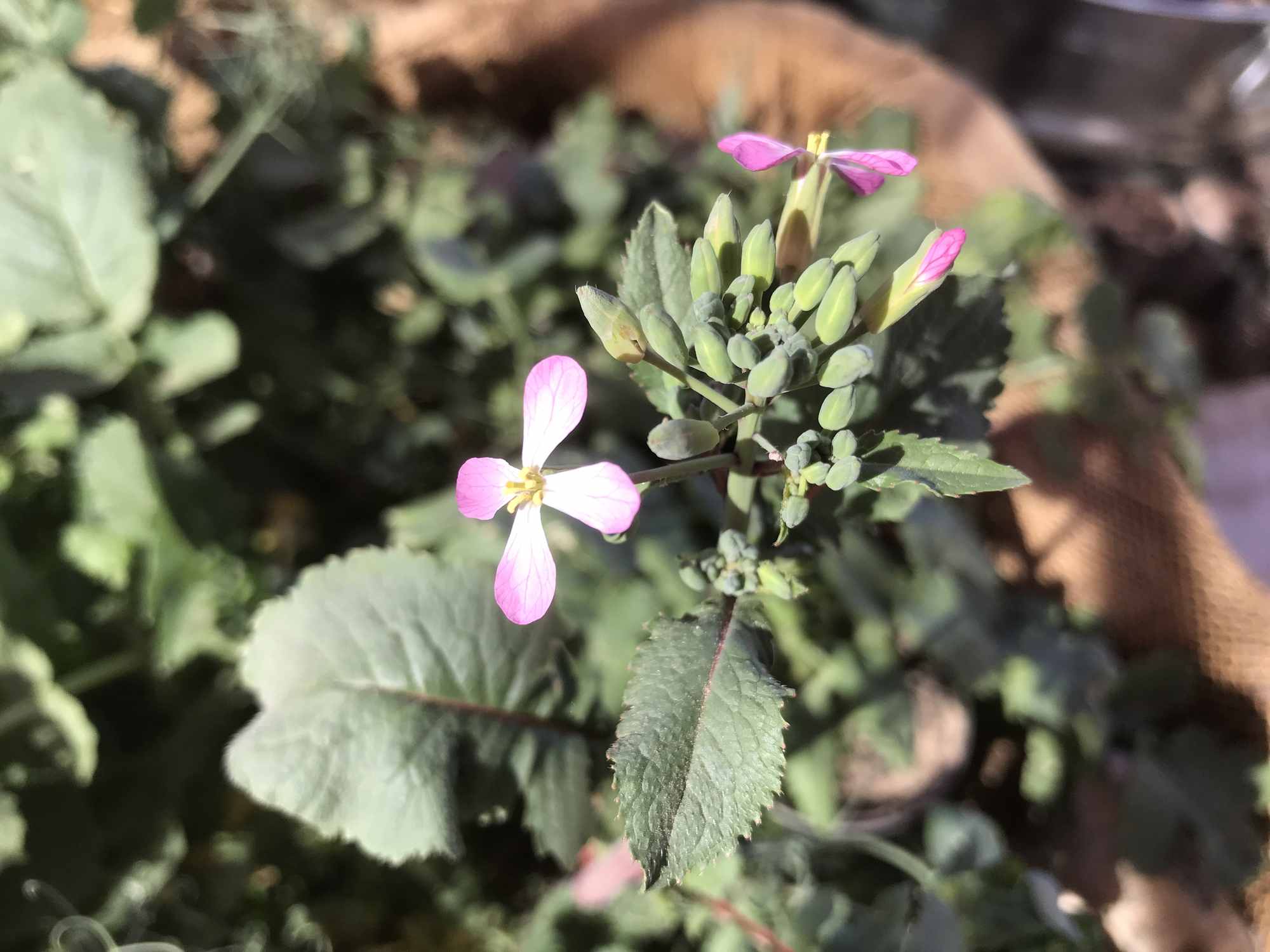
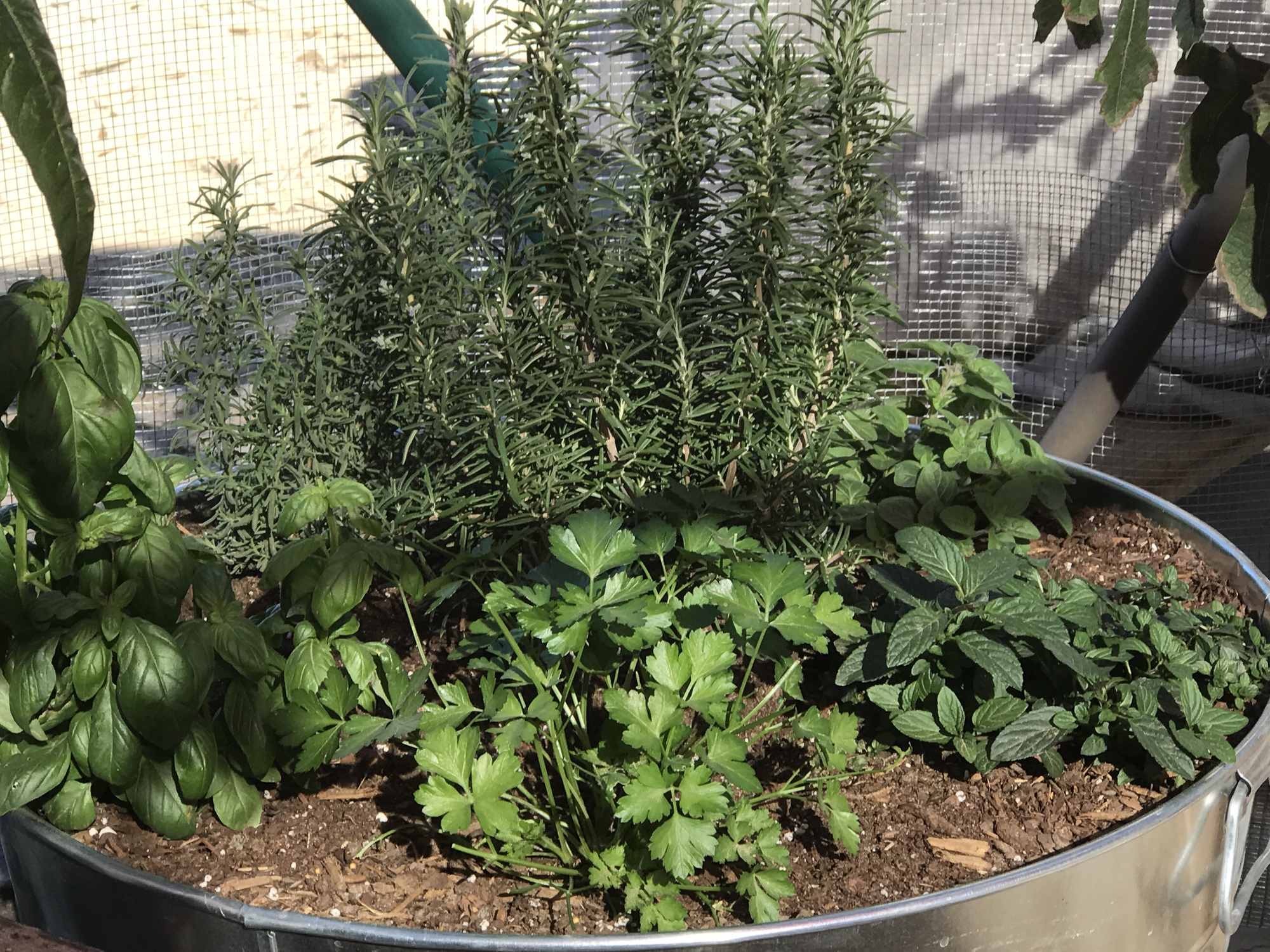
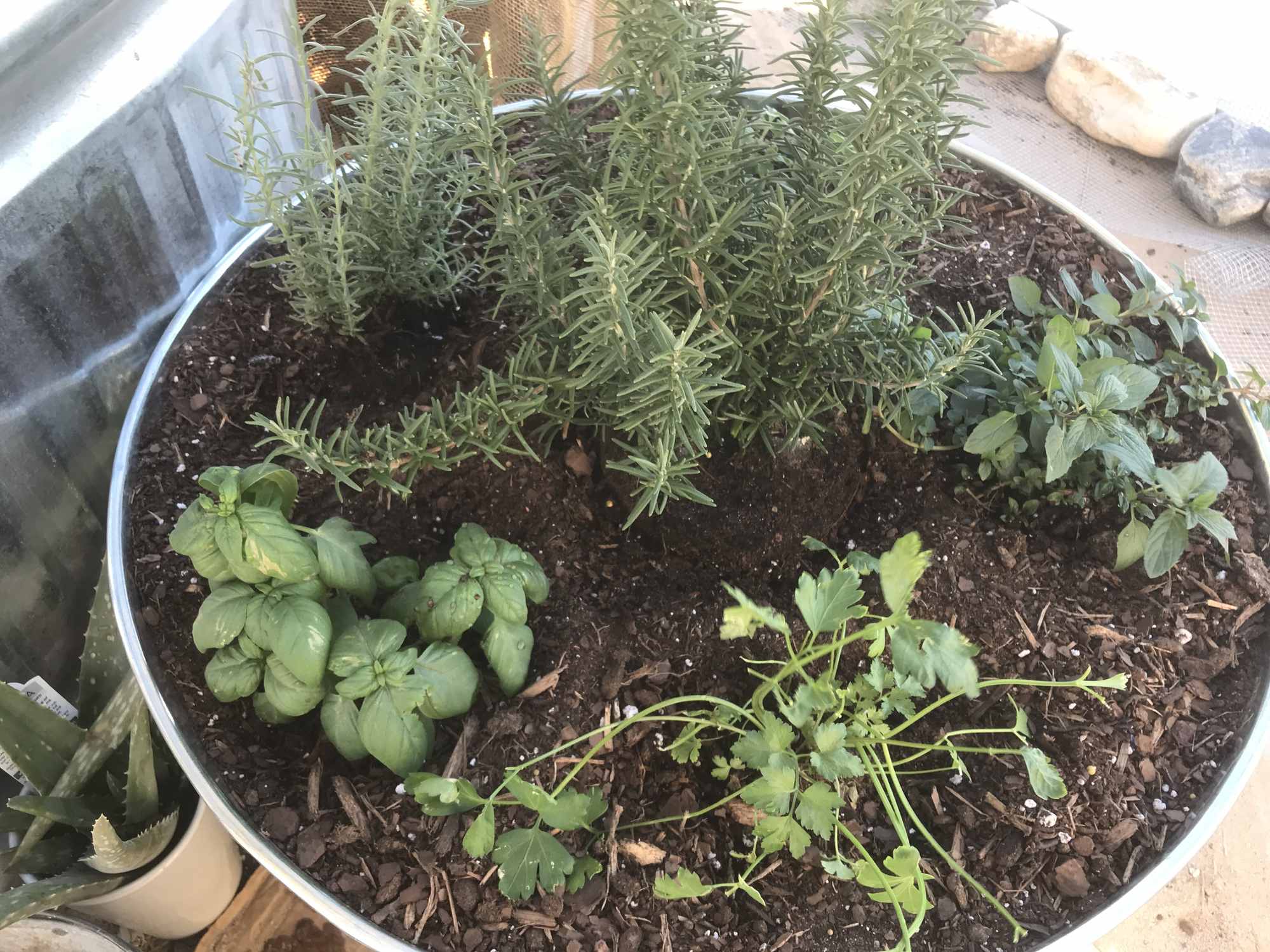
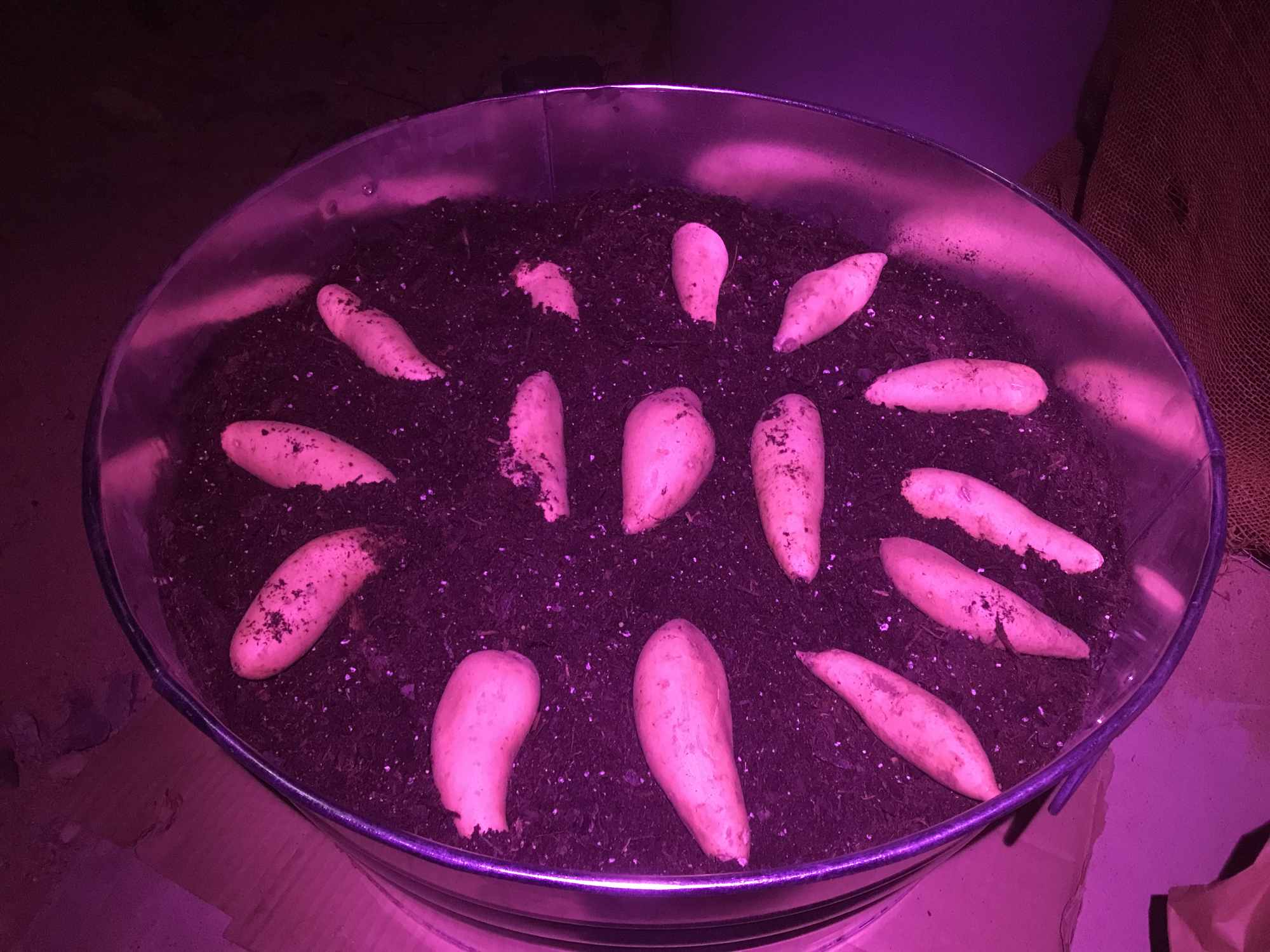
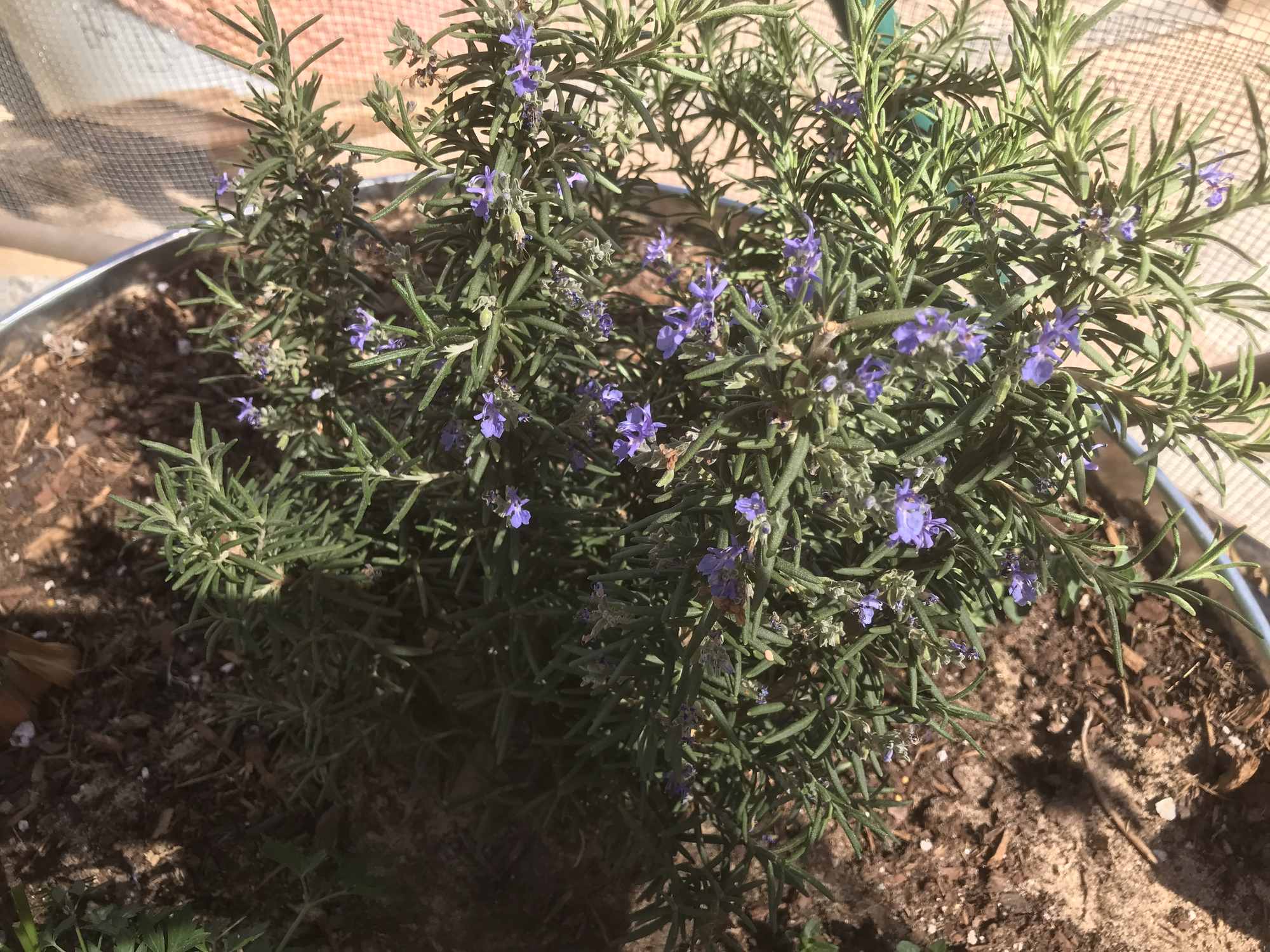
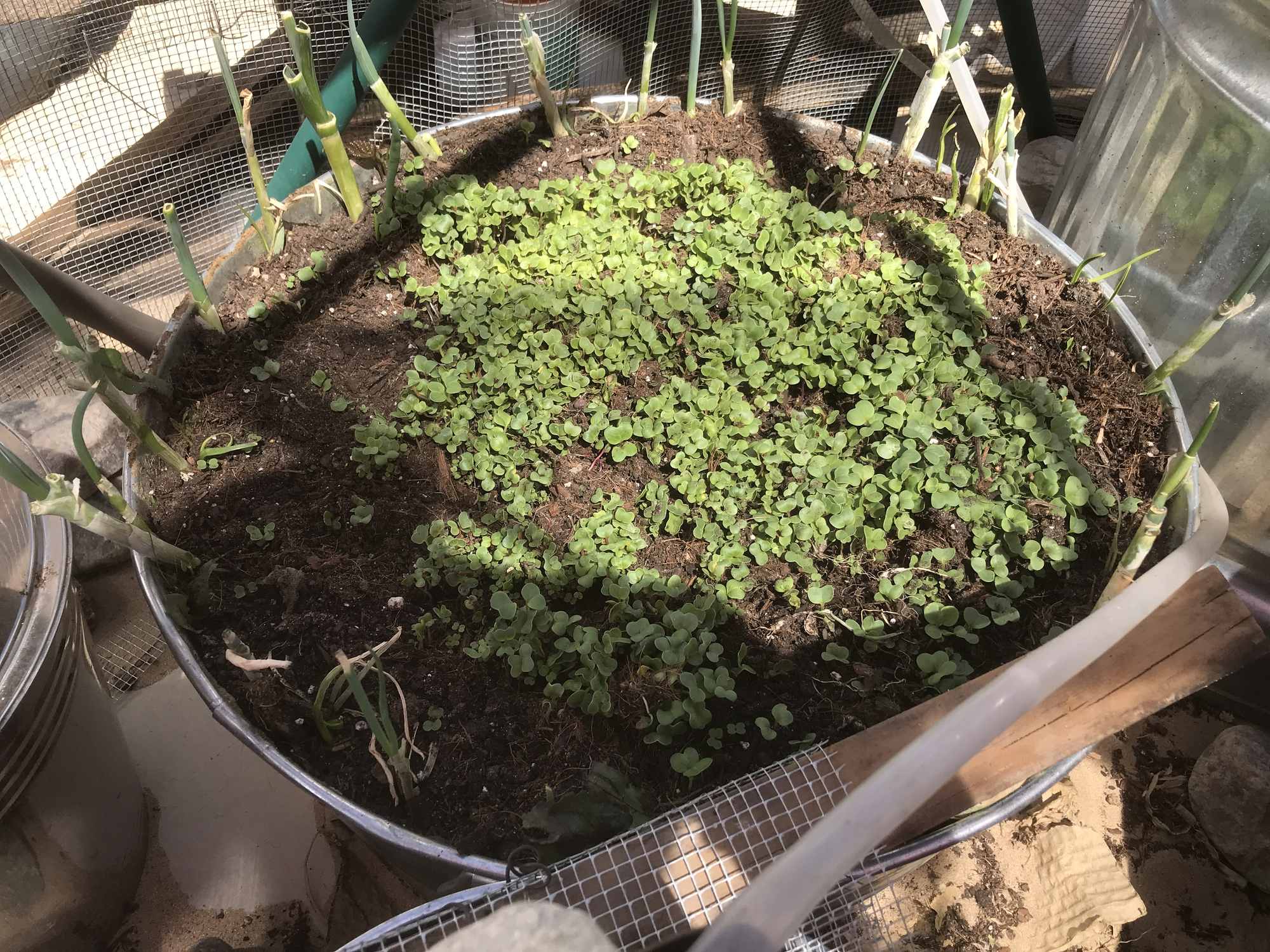
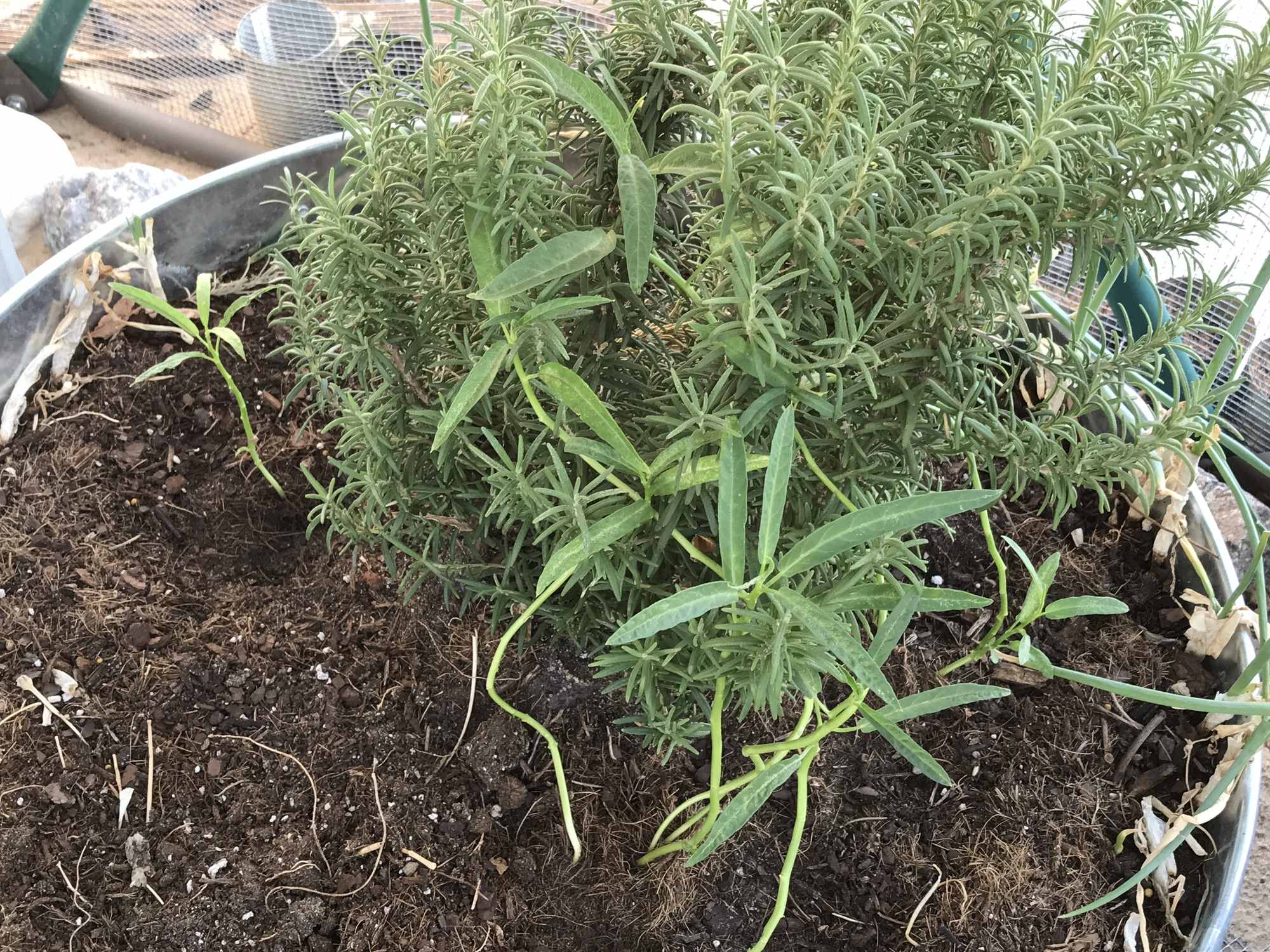
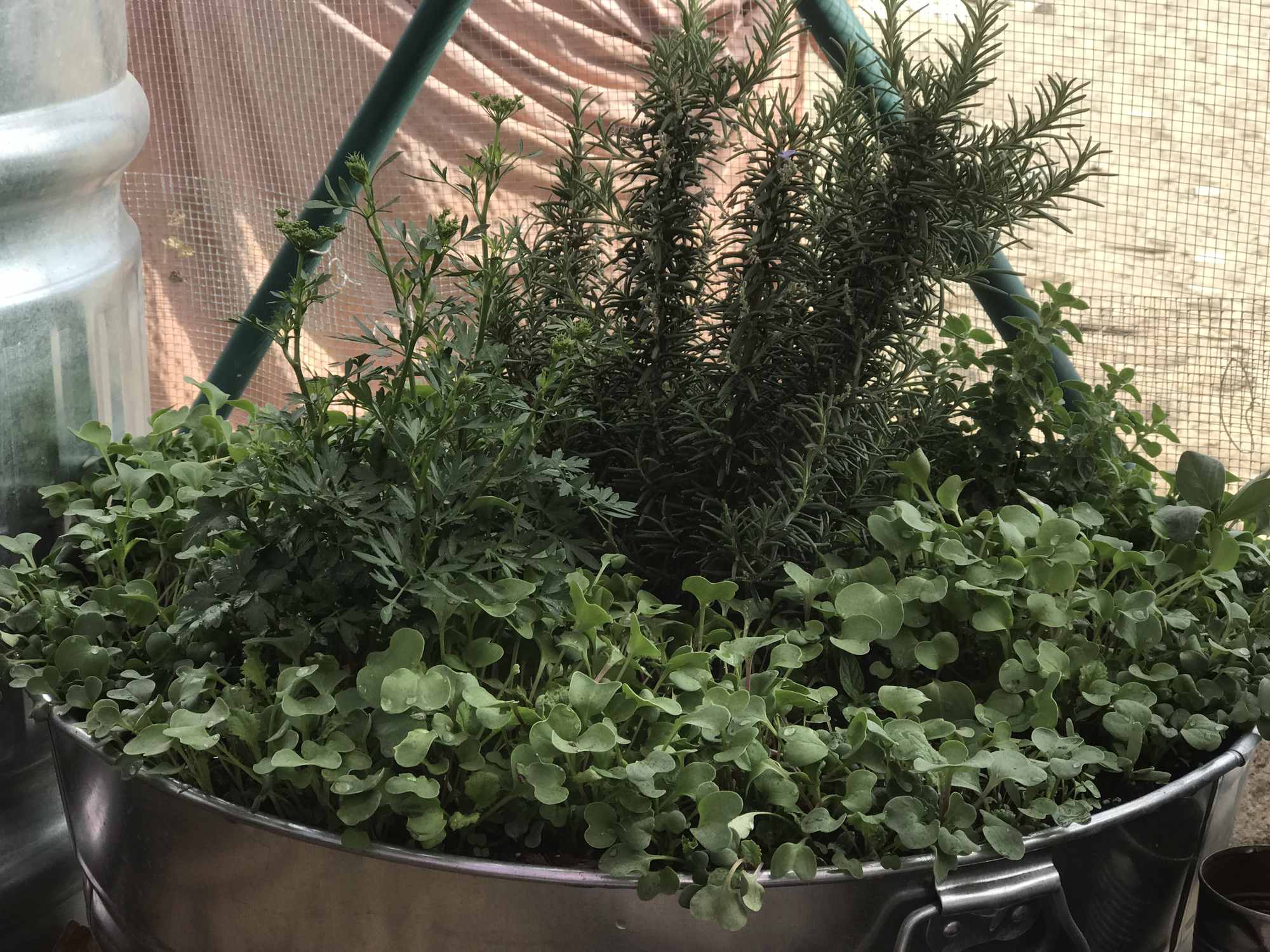
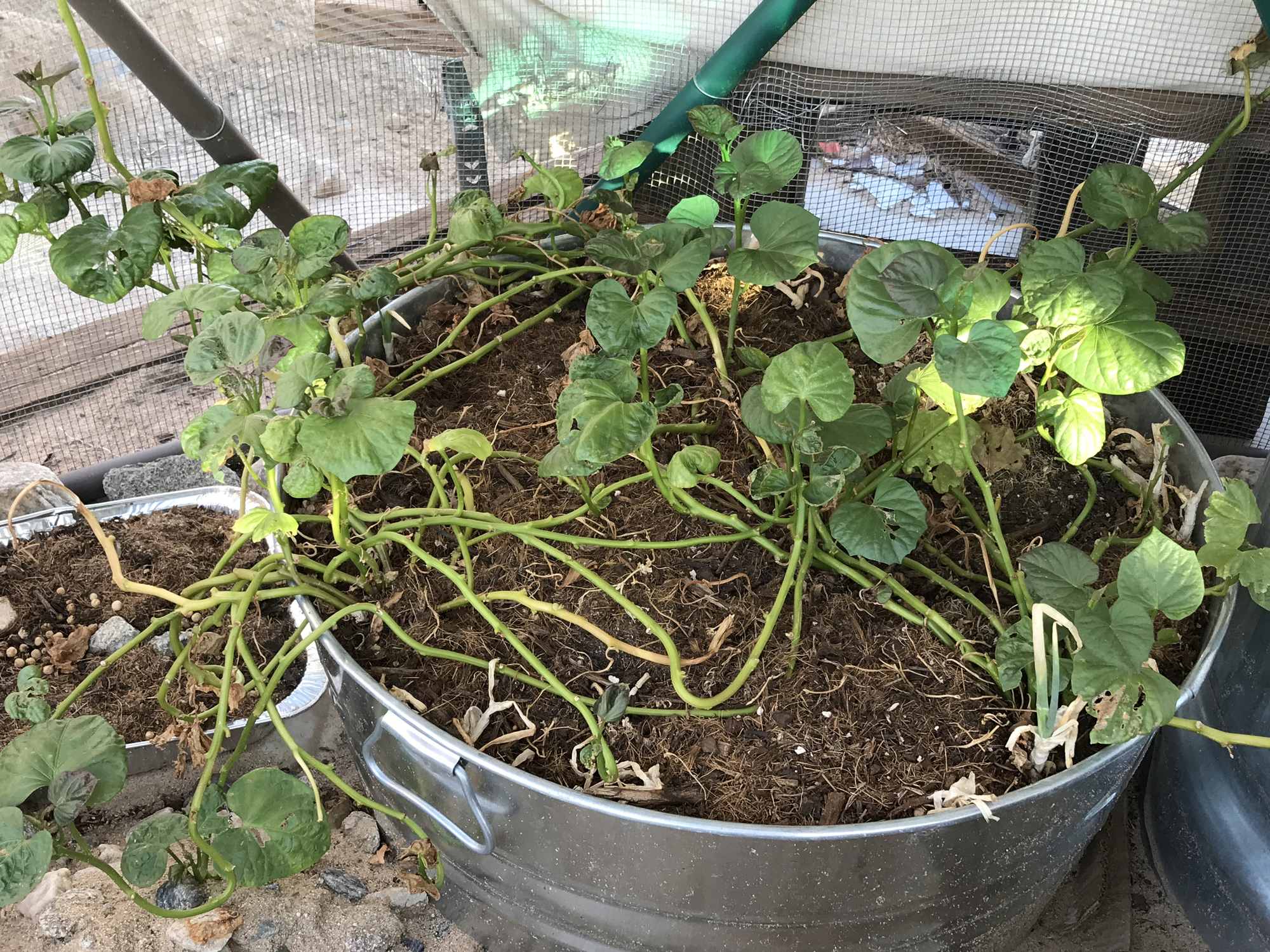
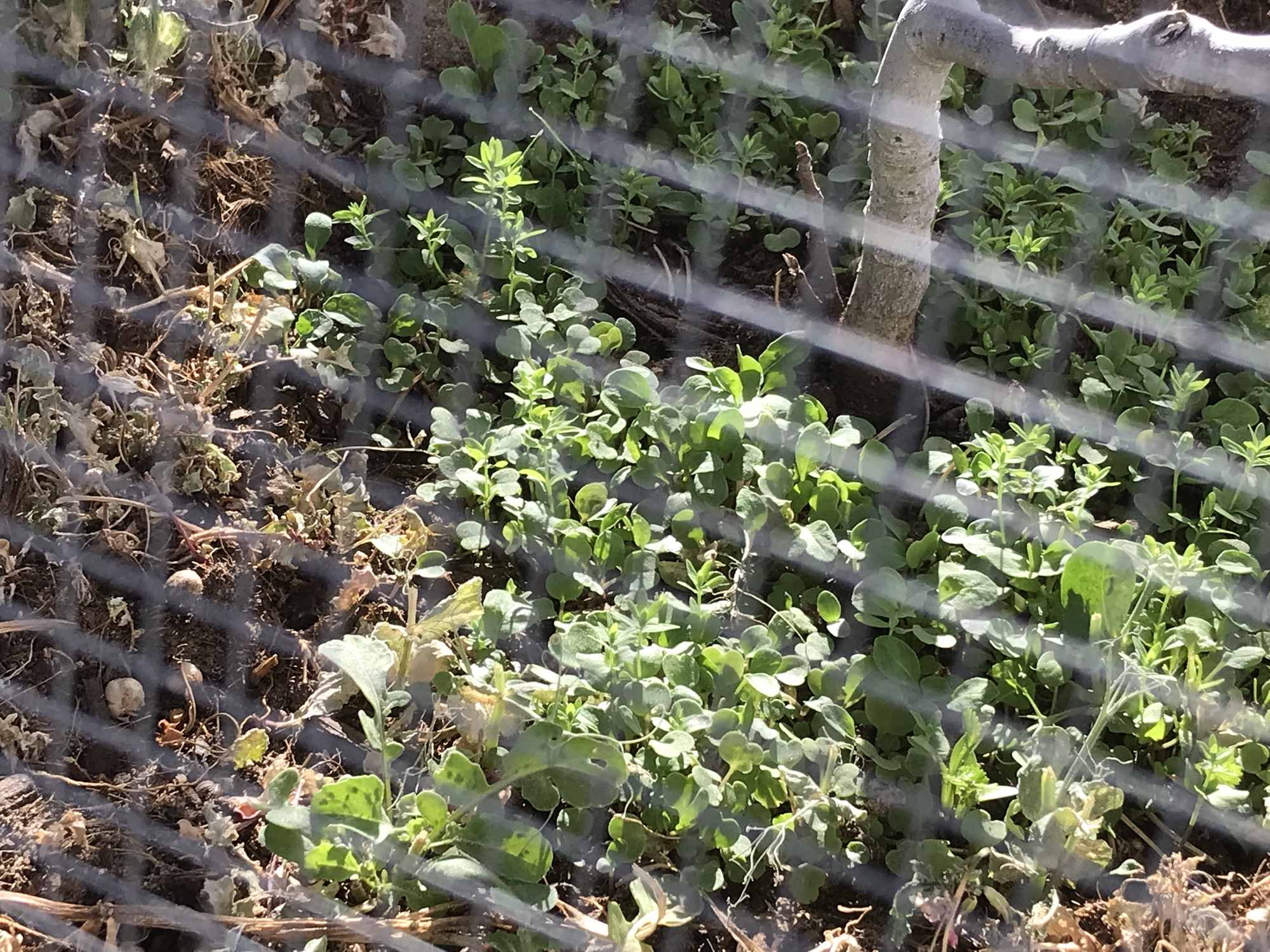
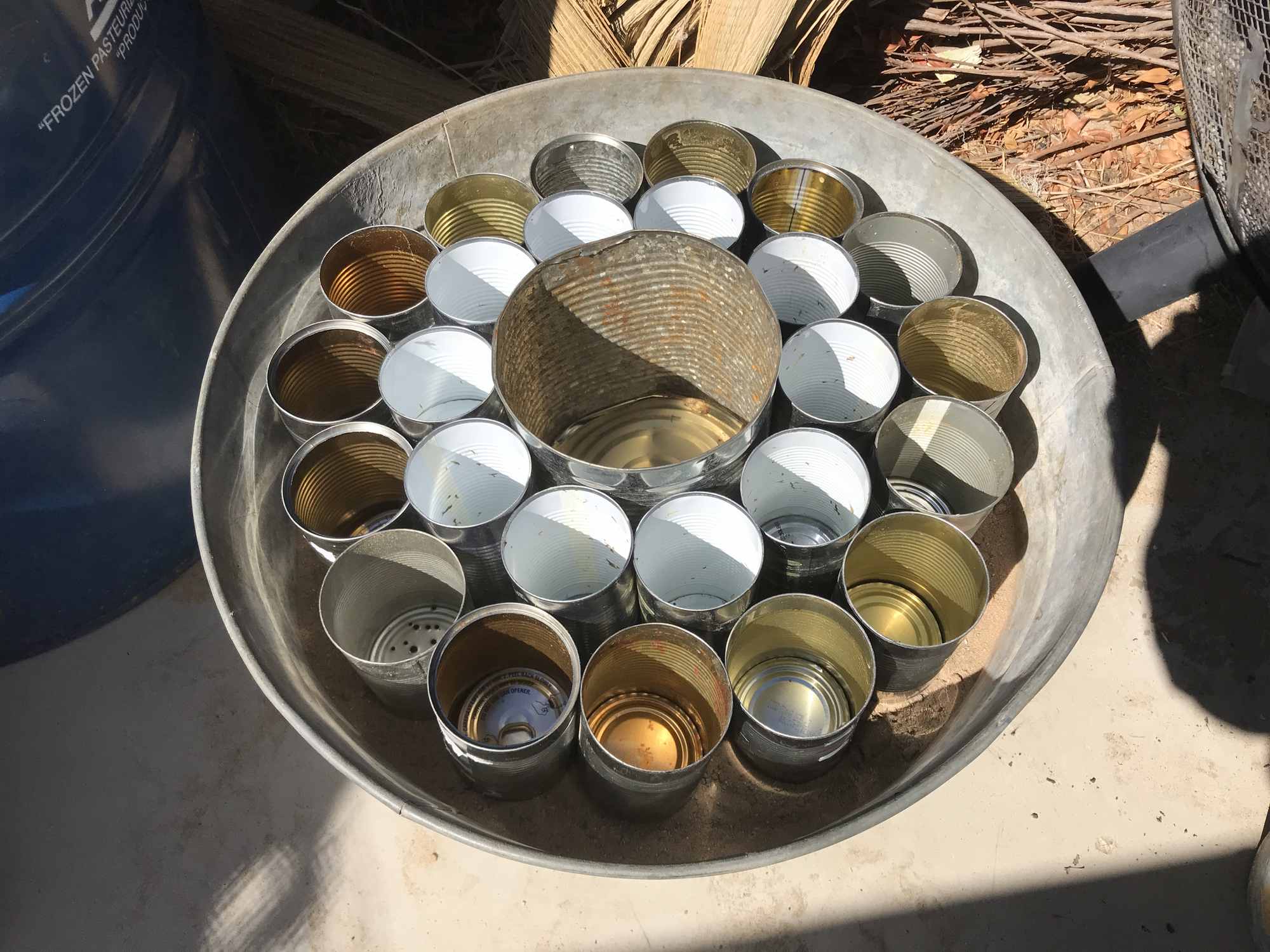
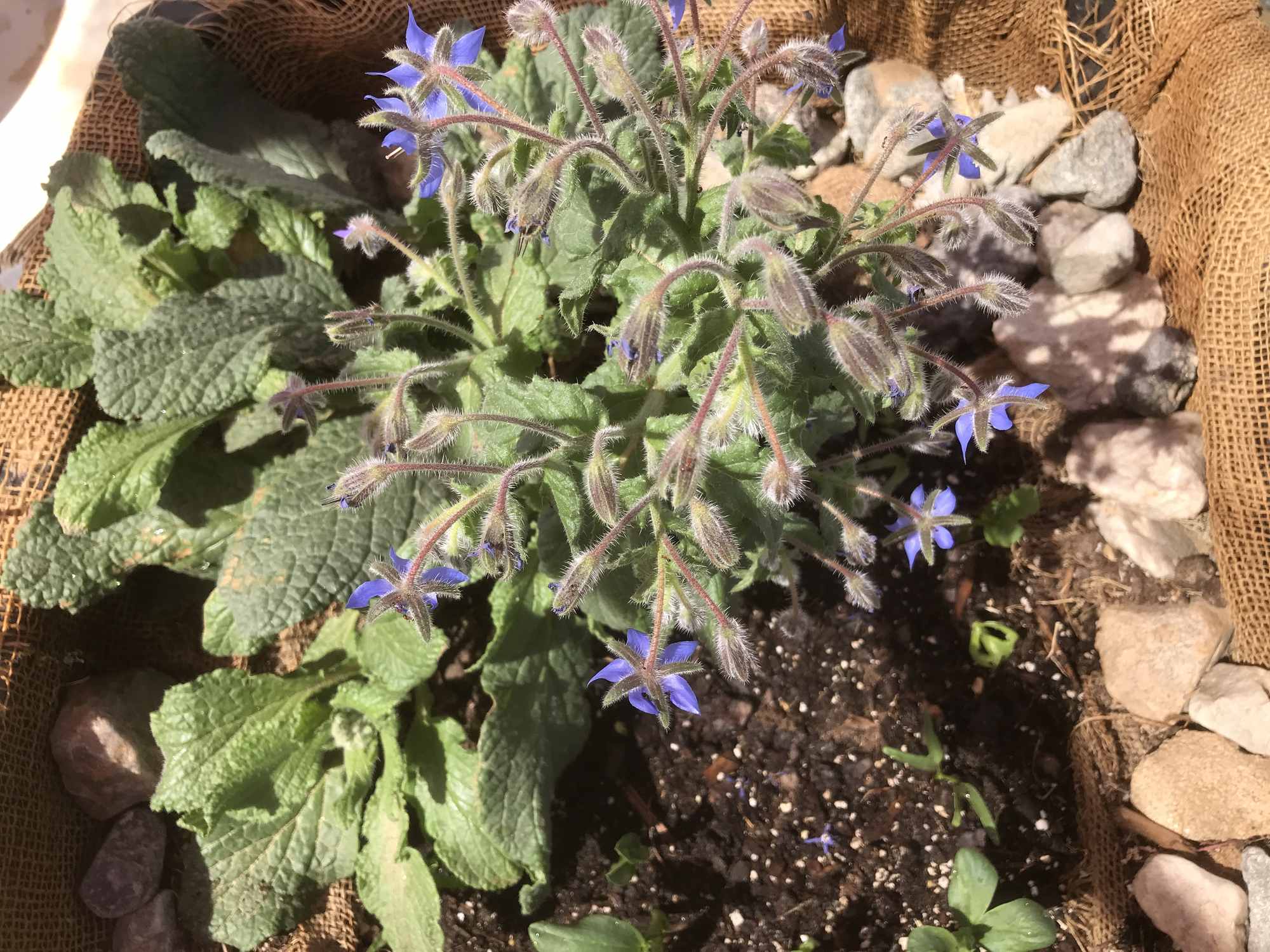
Galvanized Metal Tub Cans as Water-Wise Herbaceous and Bonsai Shrub Plant Container Gardens
Desert gardening has many obvious trade-offs. It has been one of the most difficult endeavors of my life. I anticipated losses and thus limited the scope of capital investment by starting small and building on small successes so that the failures would be minimal both emotionally and financially. It’s a given that with sand storms, high heat, desiccating winds, freezing temperatures, predator and pest pressures, and much more, it’s an uphill battle trying to establish an edible oasis out here. However, despite all the negative things, there a few on the plus side. For example with these galvanized metal tub cans, I can get away with no drainage holes, and thus no loss of precious irrigation water from run-off.
Because it rains so rarely, and when it does, everything dries out very quickly thereafter, there is almost no chance of water logging and thus killing plants in a container with no drainage holes. I’ve also added a few inches of sand at the base which saturates with water first and takes up much of it before I could soak and rot out the potting soil and root systems of the plants. So far, even after heavy rain events, they’ve all done fine and never been saturated past a healthy absorption point, they’ve never been over-watered by me or the rain.
If that were to ever happen, I’d just have to scrape the excess water off the top and soon enough the sun would be back out to evaporate more of the moisture below and return aeration back to normal.
I’ll someday be adapting these cans to their more advanced and higher intention purpose which is to be micro chinampa island water gardens. I’ve been constrained by very limited water supply over these first few years, but eventually as I’m able to afford to, I’ll have an abundance of water stored on site and thus the freedom to grow much more productive crops as islands partially submerged in a living aquaculture ecosystem. All of the unused areas of potting soil with no root activity, will be replaced by dense aquatic biology, a home for fish which eat mosquito larva, algae and other decaying matter, and that provide a perfect supply of nutrients for the potted plant islands.
For now these cans have been doing an amazing job of keeping me very healthy and fit with leafy greens and herbs providing plenty of minerals, phytonutrients, and companionship with minimal watering and maintenance. Not to mention, no weeds. Container gardening has it’s many limitations, but for a significant amount of vegetable, herb, and even fruit gardening, you can do a lot in cans and pots, or other shallow planters. Most herbaceous plants, while they might not grow as big, they can do just fine within a foot or so of soil. Some plants like mint can do fine in even less. So it’s a matter of selecting the right plants, and being willing to adapt to more of a bonsai style garden.